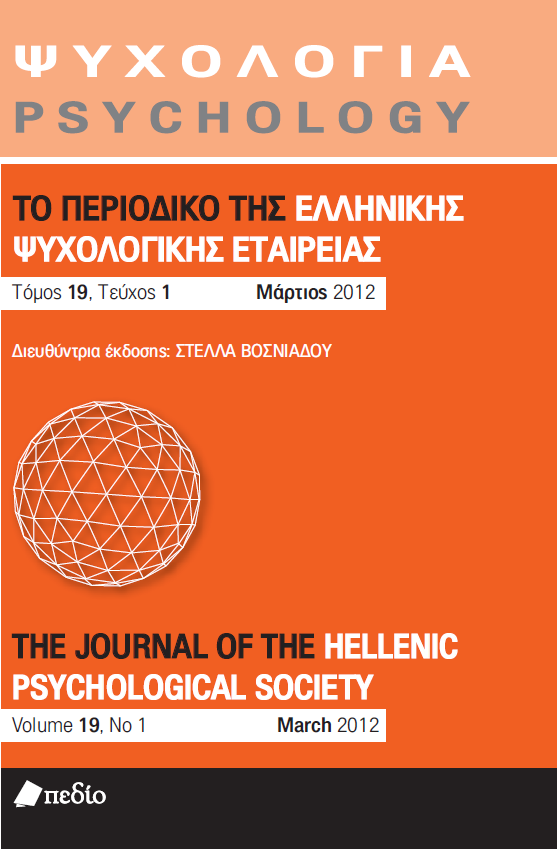Emotional indicators in drawings produced by physically abused children

Abstract
The problem of child abuse is very difficult to handle, because it is one of the best kept secrets that exist. Studying drawings is one of the most widespread methods that investigate child abuse, because one can draw sensitive information without producing fear or anxiety to the child. The present study investigated the frequency of appearance of 20
emotional indicators in the drawings produced by abused and non abused children. The subjects of the study were 101 abused and 72 non abused elementary school children. The researcher asked the children to draw a human figure, and these drawings were scored for the presence or absence of 20 emotional indicators which reflect the negative feelings of the drawer (Koppitz, 1968. Malchiodi, 1997). Twelve of those
twenty emotional indicators appeared significantly more often in the drawings produced by the abused children (p<0,000 to p<0,003). The results of this study show that drawings when analyzed by adequately
trained specialists, and when combined with other diagnostic methods, can be used to uncover child abuse. The danger behind drawing interpretation by nontrained people is emphasized in the present study.
Article Details
- How to Cite
-
Παπαδάκη - Μιχαηλίδη Ε., & Λυδάκη Π. (2020). Emotional indicators in drawings produced by physically abused children. Psychology: The Journal of the Hellenic Psychological Society, 19(1), 42–62. https://doi.org/10.12681/psy_hps.23607
- Issue
- Vol. 19 No. 1 (2012)
- Section
- RESEARCH PAPERS

This work is licensed under a Creative Commons Attribution-ShareAlike 4.0 International License.
The journal PSYCHOLOGY adopts a Platinum open-access policy. Submission, processing or publication costs are waived by the Hellenic Psychological Society. Papers published in the journal PSYCHOLOGY are licensed under a 'Creative Commons Attribution-ShareAlike 4.0 International' licence. The authors reserve the copyright of their work and grant the journal the right of its first publication. Third-party licensees are allowed to use the published paper immediately after publication as they wish, provided they retain the defined by the license copyright formalities, regarding the reference to its author(s) and its initial publication in the journal PSYCHOLOGY. Moreover, any adjusted work should be shared under the same reuse rights, so with the same CC license.


